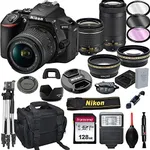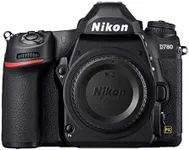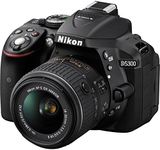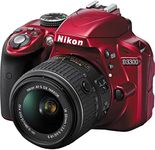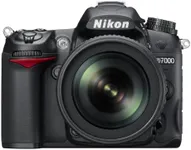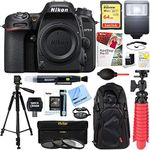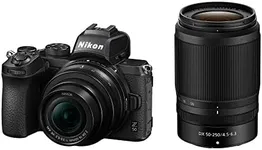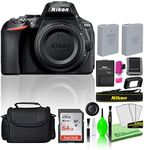Buying Guide for the Best Nikon Beginner Dslr Cameras
Choosing the right DSLR camera as a beginner can be a daunting task, but with the right guidance, you can find a model that suits your needs and helps you grow as a photographer. When selecting a Nikon beginner DSLR camera, it's important to consider several key specifications that will impact your photography experience. Understanding these specs will help you make an informed decision and ensure that you get the best camera for your needs.MegapixelsMegapixels refer to the resolution of the camera's sensor, which determines the amount of detail the camera can capture. Higher megapixels mean more detail, which is important if you plan to print large photos or crop images without losing quality. For beginners, a camera with 16-24 megapixels is usually sufficient, as it provides a good balance between image quality and file size. If you are just starting out and mainly sharing photos online, you don't need the highest megapixel count available.
Sensor SizeThe sensor size affects the camera's ability to capture light and detail. APS-C sensors are common in beginner DSLRs and offer a good balance between image quality and cost. Full-frame sensors provide better low-light performance and depth of field control but are typically found in more advanced and expensive models. For beginners, an APS-C sensor is usually the best choice as it offers excellent image quality and is more affordable.
ISO RangeISO range determines the camera's sensitivity to light. A wider ISO range allows you to shoot in various lighting conditions, from bright sunlight to low-light environments. For beginners, a camera with an ISO range of 100-25600 is generally sufficient. This range will give you the flexibility to shoot in different lighting situations without introducing too much noise (graininess) into your photos. If you plan to shoot a lot in low light, look for a camera with good high ISO performance.
Autofocus SystemThe autofocus system helps you achieve sharp focus on your subjects quickly and accurately. A good autofocus system is crucial for capturing fast-moving subjects, such as in sports or wildlife photography. Beginner DSLRs typically have fewer autofocus points than advanced models, but they are still capable of delivering sharp images. Look for a camera with at least 9-11 autofocus points, which should be sufficient for most beginner needs. If you plan to shoot a lot of action or moving subjects, consider a model with more autofocus points and better tracking capabilities.
Continuous Shooting SpeedContinuous shooting speed, measured in frames per second (fps), indicates how many photos the camera can take in a burst. This is important for capturing fast-moving subjects or action shots. For beginners, a continuous shooting speed of 3-5 fps is usually adequate. If you are interested in sports or wildlife photography, you might want to look for a camera with a higher fps rate to ensure you don't miss any critical moments.
Video CapabilitiesMany beginner DSLRs offer video recording capabilities, which can be a great addition if you want to capture both photos and videos. Look for a camera that can record in at least Full HD (1080p) resolution. Some models also offer 4K video recording, which provides higher resolution and more detail. If video is important to you, consider the camera's video features, such as frame rates, autofocus during video recording, and microphone input for better audio quality.
Ease of UseAs a beginner, you want a camera that is easy to use and has a user-friendly interface. Look for a model with intuitive controls, a clear menu system, and helpful features like guide modes or tutorials. Some cameras also offer touchscreen interfaces, which can make navigating settings and reviewing photos more convenient. The ease of use will help you learn and enjoy photography without getting frustrated by complex controls.
ConnectivityConnectivity options, such as Wi-Fi, Bluetooth, and NFC, allow you to easily transfer photos to your smartphone or computer for sharing and editing. These features can be very convenient for beginners who want to quickly share their photos on social media or back them up. Look for a camera with built-in connectivity options to streamline your workflow and make it easier to manage your photos.
